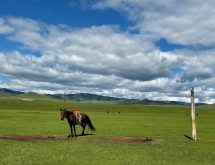An Ontario farmer says genetically modified crops can co-exist with non-GMO crops and he has the farm to prove it.
Jim Gowland, chair of the Canadian Soybean Council, told MPs on the House of Commons agriculture committee last week that his 2,300- acre farm includes 900 acres of non- GM soybeans for export and hundreds of acres of GM corn.
He said he is not worried about the purity of his GM-free soybeans, even though 65 percent of the Canadian soybean crop is GM.
It is all about management.
Read Also

Storm dynamics and extreme rainfall
Besides moisture, instability and orographic lift, the next biggest factor that contributes to heavy or extreme rainfall is storm dynamics.
“Our farm incorporates the benefits gained through biotechnology while taking advantage of the opportunities to add value to our farm operation by growing non-GM soybeans for world markets,” he said.
Export of non-GM soybeans adds $75,000 to his bottom line each year.
He said the key is management practices “that are needed for segregation.”
The government must also continue efforts to convince potential markets that a low-level presence of unapproved GM traits should be accommodated, he added.
“We need proper identity preserved protocols in place and the support of the Canadian government in developing low-level presence policies,” Gowland told MPs studying the biotechnology industry and agriculture.
“Canadian soybean growers will then be able to take advantage of future opportunities derived from biotechnology while meeting the ever-changing requirements of the global marketplace for specialty non-GM soybeans.”
However, the idea of co-existence was not a common theme as committee hearings moved to evidence from organic farmers and their fears about GM contamination and lost markets.
Jodi Koberinski, executive director of the Organic Council of Ontario, said introduction of GM canola destroyed the Ontario organic canola industry that was at the time the province’s fastest growing organic sector.
Arnold Taylor, former Canadian Organic Growers chair, warned of the dire consequences for the organic industry if GM flax or wheat is marketed.
Manitoba organic producer Larry Black said that while Monsanto recommends a 800 metre buffer zone to protect organic fields from GM contamination, it is not nearly adequate.
Bees and wind can carry pollen 16 kilometres in either direction.
Koberinski said GMO farmers or the industry should be liable for the economic damage that will be done to Canada’s $2.8 billion organic industry.
“Existence of both GM and non- GM agriculture means that each system must maintain integrity and take responsibility,” she said.
“The current situation where those whose crops are polluted by GMOs bear the economic burden of pollution must not continue.
“We’d like to see that there’s some policy in place that the polluter pays.”
She said with less than 20 years of production experience, there is no reliable evidence yet of the long-term health effects of consuming GM food.
And the organic sector remains convinced it will win in the end.
“We are convinced that our position is shared by a majority of Canadians and that as detrimental effects of genetic modification of plants become more apparent, the opposition to their continued use will become insurmountable,” Koberinski said.














